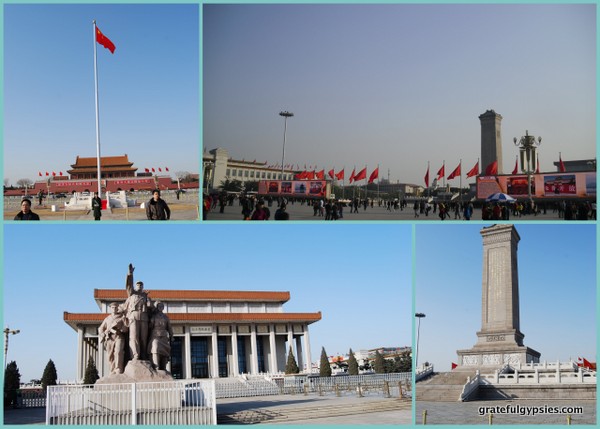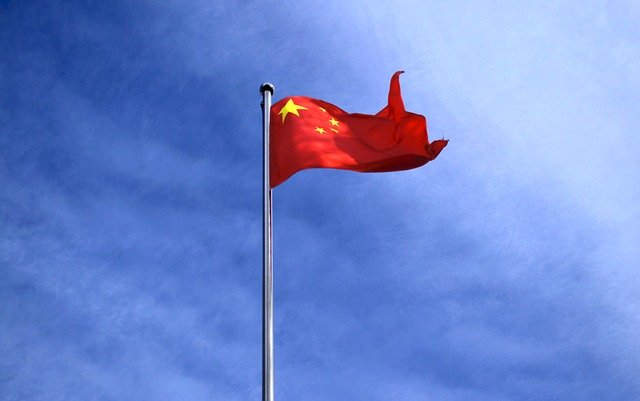Celebrating National Day Posted by sasha on Oct 4, 2021 in Culture, History, Holidays
Every year on October 1st, China celebrates its National Day (国庆节 guó qìng jié). This is one of the most important holidays in the country. It’s one of two Golden Week (黄金周 huáng jīn zhōu) holidays, along with the Spring Festival (春节 chūn jié). People all over the country are enjoying a few days off of work or school and celebrating National Day, so that’s what we’re doing in this post! We’ll learn a lot of useful vocabulary for talking about China and help you understand more about the most populous country on the planet.
A Brief History of the Holiday
Back on October 1st, 1949, Mao Zedong (毛泽东 máo zé dōng) procalimed the founding of the People’s Republic of China (中华人民共和国 zhōng huá rén mín gòng hé guó). This marked the end of the Civil War (国共内战 guó gòng nèi zhàn) between Mao’s Communist Party (共产党 gòng chǎn dǎng) and the rival Kuomintang (国民党 guó mín dǎng) led by Chiang Kai-shek (蔣介石 jiǎng jiè shí).
The war was fought between 1927 and 1949 except for a brief period where hostilities were put on hold to battle the invading Japanese. This time where the two sides worked together against a common enemy is known as the Second United Front (第二次国共合作 dì èr cì guó gòng hé zuò).
Once the Japanese were defeated, however, the CCP and KMT resumed their long and bloody civil war. While there are no official statistics, it’s estimated that around 2.5 million people died in the four-year period between 1945-49 alone. Some historians estimate that the total death toll for the civil war could be more than six million.
With the victory of Mao and the CCP, Chiang and about 2 million fellow Nationalists retreated to the island of Taiwan (台湾 tái wān) and kept the name Republic of China (中华民国 zhōng huá mín guó). As you’re probably well aware, the issue remains contentious to this very day. The ROC maintains that it is an independent nation, while the PRC claims Taiwan as a breakaway province.
On National Day this year, China sent 38 fighter jets toward Taiwan in the largest show of force yet this year. Meanwhile in Taipei, protestors gathered calling for the independence of Hong Kong and Tibet. We’re not here to dive into the intricacies of geo-politics, though, so let’s continue with the history lesson for now…
After over two decades of war, Chairman Mao stood in Tiananmen Square (天安门广场 tiān’ān mén guǎng chǎng) and led the founding ceremony (开国大典 kāi guó dà diǎn) of the new nation. The city once known as Beiping would be the new capital, with a new name – Beijing (北京 běi jīng). Here’s what he said at exactly 3PM on that cool October afternoon:
同胞们,中华人民共和国中央人民政府今天成立了!
tóng bāo men, zhōng huá rén mín gòng hé guó zhōng yāng rén mín zhèng fǔ jīn tiān chéng lì leDear comrades, I hereby declare the formal establishment of the People’s Republic of China and its Central People’s Government!
It’s been 72 years since the founding of the PRC. Incredibly, you can actually watch Mao’s speech from 1949 on YouTube. See if you can understand his very thick Hunan accent in this famous historical speech:
Celebrating National Day
As you may imagine, celebrating National Day is all about being a patriot (爱国者 Ài guó zhě). The best way to do this is by attending the flag-raising ceremony (升旗仪式 shēng qí yí shì) in Tiananmen Square. This is a big deal every day, but it’s especially important on October 1st. Thousands of people line up before sunrise just to witness this special occasion. Here are some highlights from the flag-raising ceremony this year:
Every true patriot can sing along to all the words of the national anthem (国歌 guó gē). In China, that’s “March of the Volunteers” (义勇军进行曲 yì yǒng jūn jìn xíng qǔ). The words were written by Tian Han (田汉), a poet and playwright, while the music was written by composer Nie Er (聂耳). You can learn more about the national anthem and learn the lyrics in Chinese in this post:
Speaking of the flag, let’s learn more about this important symbol. The Chinese flag is known as the “Five Starred Red Flag” (紅地五星旗 hóng wǔ xīng qí). It was designed by a citizen from Zhenjiang named Zeng Liansong (曾聯松), who beat around 3,000 other people in a competition with his design. He got the design from an ancient Chinese proverb: “longing for the stars, longing for the moon” (盼星星盼月亮 pàn xīng xīng pàn yuè liàng).
There are two colors on the Chinese flag: red (红色 hóng sè) and yellow (黄色 huáng sè). The red is a symbol of the bloody revolution that the country endured, while the yellow is the sun shining on the new nation.
As far as the five stars go, the larger star represents the CCP and its leadership. The four smaller stars represent the population, as split into four different classes: the peasantry, the working class, the urban petty bourgeoisie, and the national bourgeoisie. This classification comes from a speech given by Chairman Mao.
There is usually massive National Day Parade (国庆阅兵 guó qìng yuè bīng) along Beijing’s central Chang’an Avenue. The last big parade was held two years ago on the 70th anniversary of the founding of the PRC. Due to the ongoing pandemic, there was no parade last year or this year on National Day. You can see some highlights from the 2019 parade in this video:
While celebrations may look different this year, there are still some 1.4 billion people in China celebrating National Day, along with many overseas Chinese all over the world. I know I’ll never forget celebrating the holiday with the throngs of people in Tiananmen Square way back in 2010 when I was teaching English in Beijing. I’ll leave you with that video, which was one of my very first as a contributor to the Chinese blog.

Build vocabulary, practice pronunciation, and more with Transparent Language Online. Available anytime, anywhere, on any device.






Leave a comment: